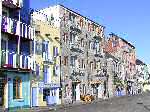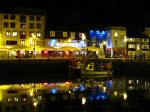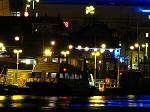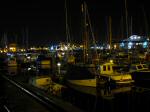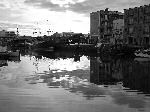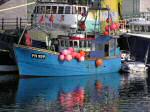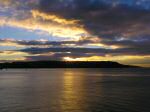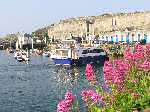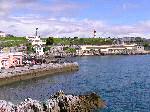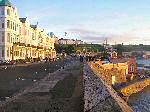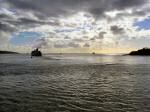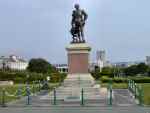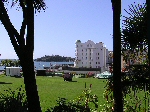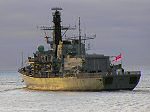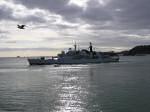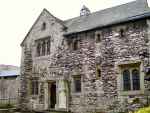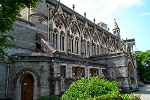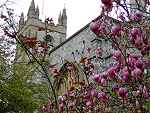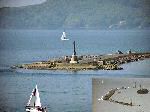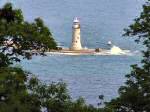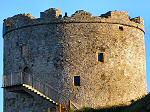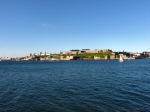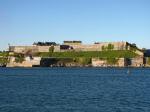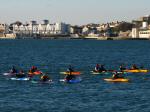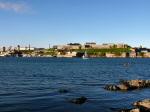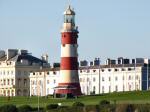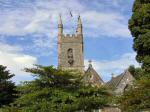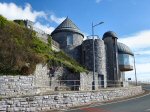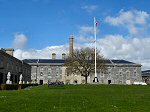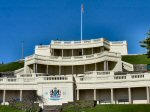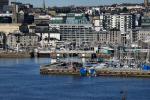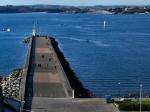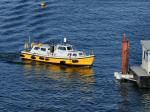In the Middle Ages Plymouth was a small fishing settlement belonging
to Plympton Priory. However it soon grew into a town with a market being
started in the early 13th century, and a town charter being granted in
1254. Apart from fishing, it was also a centre of trade with wine being
imported from France and Spain. The numerous wars of the time between
England and France saw Plymouth being attacked several times, the worst
raid being in August 1403 when part of the town was destroyed leading
to an area of the city being called Breton Side, a name that exists to
this day. The town became free of the control of Plympton Priory with
the granting of self-government in a new charter of 1439. After the discovery
of Newfoundland in 1497, Plymouth fishermen exploited the rich fish stocks
there. At the same time trade with continental countries and from elsewhere
in England continued to flourish with hops, coal, wine, sugar, grain and
fruit being imported and wool and tin being exported. However, Plymouth
really sprang into prominence after the discovery of the New World, and
during the reign of Elizabeth I, it became the foremost port in the country,
exceeding the port of London in the volume of trade handled. Plymouth’s
name will forever be associated with such famous seaman and explorers
as Grenville, Hawkins, Drake, Frobisher and Raleigh. Sir John Hawkins
was a citizen of Plymouth, its port admiral, and in 1571, its Member of
Parliament. Sir Humphrey Gilbert sailed from Plymouth on his second colonizing
expedition to the New World in 1583; Sir Francis Drake left Plymouth on
his voyage around the world in 1577, and it was in Plymouth Sound that,
in 1588, the English fleet awaited the sighting of the Spanish Armada
and sailed to give it battle under the command of Lord Howard of Effingham
and Sir Francis Drake after the famous game of bowls on Plymouth Hoe.
One of the most famous episodes in Plymouth’s history was the sailing
of the Mayflower in 1620, carrying the Pilgrim Fathers to America. The
Mayflower Steps and its Commemorative Stone Tablet is one of the famous
sites of Plymouth.
During the English Civil War of 1642 the citizens of Plymouth took the
Parliamentarian side and suffered a long siege from August 1643 to January
1646 from the Royalist side. After the restoration, King Charles II commissioned
the building of the Citadel on Plymouth Hoe in 1665. It is still used
today and dominates much of the old Barbican area. In 1689 the first dockyard
was built at Devonport (originally Plymouth Dock) and Plymouth became
the Royal Navy’s major base in the South West. To protect Plymouth Sound
and the anchorages there, the navy started to build a breakwater in 1812.
It was designed by John Rennie and Joseph Whidby but had to be finished
by Rennie's son as the work took nearly 40 years, being finished in 1841.
The breakwater is over a mile long with a a lighthouse on one end and
a beacon on the other. Another settlement, including a marine barracks,
a naval hospital and a military hospital grew near Stonehouse creek in
the second half of the 18th century. In 1801, at the time of the first
census there were 3 towns Plymouth, Stonehouse and Devonport.
The three towns were combined in 1914 to form the modern city of Plymouth.
However it was not until 1928 that Plymouth was made a city and had its
first Lord Mayor in 1935.Because of its importance as a naval base and
its dockyard, Plymouth was a prime target during the World War II. The
city was heavily bombed with 1,172 civilians killed, the city centre devastated
and much housing stock destroyed. This led to a big building program after
the war with a modern city centre being built and large, new housing estates
on what was then the outskirts of Plymouth. The city boundaries have continued
to grow, absorbing Roborough and Tamerton in 1951 and Plympton and Plymstock
in 1967. Today, the city remains a naval and fishing port but has attracted
many new light industries, built a new theatre (the Theatre Royal) in
1982, became a university city in 1992, and is developing a strong leisure
and tourism business with new marinas, the National Marine Aquarium and
new centres of entertainment. Plymouth Hoe, with its statue to Francis
Drake, and the famous Smeaton’s Tower (a lighthouse built by John Smeaton
on the Eddystone Rocks, 14 miles SW of Plymouth in 1759 and moved to Plymouth
Hoe in 1884) remains not only a recreational area for both residents and
tourists but a haven for nature. |
